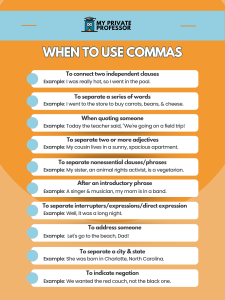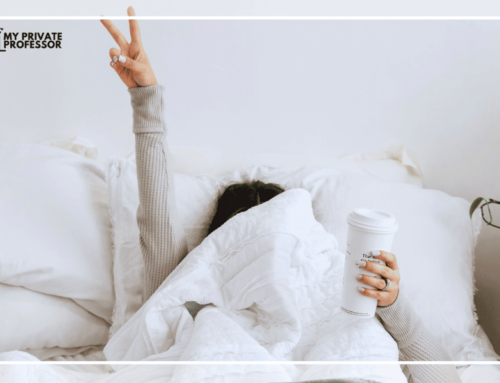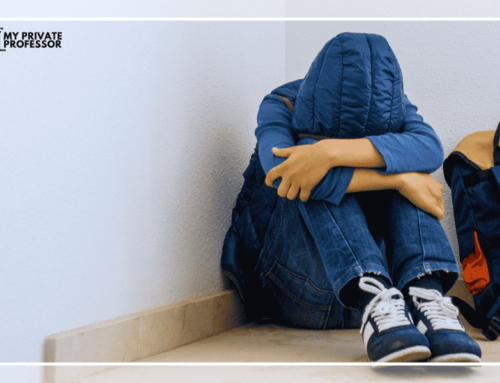Even if you’re not a seasoned writer, grammar will inevitably make its way into your work—whether for school or your job. Grammar is a critical part of communication, which is necessary, in some way or another, in all work.
Of course, language is one of the true building blocks for communication—but without grammar, you’d run into some serious barriers.
More than that, as a student, honing your grammar knowledge can help you excel in some obvious ways…writing papers, reports, and of course, the college admissions essay.
Actually getting into it and nailing down seemingly overly-complicated grammar points is kind of like cleaning out your closet: it’s hard to stop procrastinating, but once you finally get it done, you feel fantastic.
So here’s a grammar refresh on some of the common mistakes that we all (really, all of us!) make from time to time.
Grammar mistake #1: they’re vs. their vs. there
Although they can look annoyingly similar to each other, these three words have very different meanings.
They’re
“They’re” is a contraction (a combination of two or more words). And you make a contraction by omitting some of the letters in the second word (“are). In this case, you’re combining “they” and “are”, and omitting the “a” in “are”.
“They’re” can precede a verb, adjective, or adverb.
Examples:
- They’re playing soccer today.
- They’re angry at you.
- They’re excitedly getting ready.
Their
“Their” is a possessive pronoun, which means that you use it to talk about something that belongs to someone. It usually comes before a noun, but can also precede an adjective or adverb.
Examples:
- Their dog initially was living in an animal shelter.
- Their big pool looks very inviting.
- Unfortunately, their carefully laid plan was not successful.
There
“There” describes location. We use “there” to talk about where something is/did/will occur. This word can cause some confusion, because, unlike the above words, it can fall into several different parts of speech—you can use “there” as an adverb, noun, pronoun, adjective, or interjection.
Examples:
- We waited there until it was our turn. (adverb)
- Our house is five miles from there. (noun)
- There are several shopping centers in our neighborhood. (pronoun)
- My friend is always there for me. (adjective)
- There, I’ve had enough! (adjective)
Grammar mistake #2: affect vs. effect
This one’s a toughie. And often, it starts creating problems when you’re tasked with writing scientific papers or reports (as you’re often required to discuss the impact of [x] on [y].
But luckily, the difference is pretty simple, and you just have to really grind it into your brain: “affect” is a verb, while “effect” is a noun. So you use “affect” to talk about how one thing is impacting something else; and you use “effect” to talk about the impact itself.
Examples:
- The cold weather has a major effect on his mood.
- The cold weather majorly affected his mood.
Grammar mistake #3: me vs. I
Often, people confuse the uses of “me” and “I” because, well, they do seem extremely similar! They’re both talking about the one person—you! But there’s one difference: linguistically speaking, they serve as different parts of speech. While “me” is an object, “I” is a subject.
This means that we use “me” to describe the person that the action is happening to, or the person who is receiving the action. On the contrary, we use “I” to describe the person doing the action.
Examples:
- As soon as school started, the principal called me into his office.
- As soon as the waitress brought our food, I dug in.
- He asked me whether it was true; and I told him yes, it was true.
(Note that you can have a sentence where you’re using both “me” and “I” as is the case in the third example!)
Sometimes it can be particularly tricky when you have a list of objects: i.e. When the teacher stood up, she listed the names of the students receiving scholarships: Emma, Patrick, Samantha, and me.
In this case, the correct pronoun would be “me”, because we’re talking about an object—to make this easier, simply cut out the middle part of the sentence and you may see that it’s easier to know whether “me” or “I” is correct:
When the teacher stood up, she listed the names of the students receiving scholarships: Emma, Patrick, Samantha, and me.
Grammar mistake #4: then vs. than
Just like affect vs. effect, then vs. than can be challenging because there’s only one letter that’s different—and on paper, it can be tough to actually remember which is correct because the lowercase “a” and “a” can look pretty similar. Just like the examples above, the meanings of “then” and “than” are drastically different—let’s see how.
We use “then” to talk about when something will, does, or did happen—so it’s time-related.
Meanwhile, “than” is a comparison word, meaning that we use it to compare two or more different things. You can use it to compare attributes of people, physical characteristics, likes vs. dislikes, etc.
Examples:
- I got dressed and then I brushed my teeth.
-
- This morning, I will eat breakfast, and then I will go to work.
- Last year, I earned my bachelor’s degree, and then I traveled abroad.
- My sister grew to be a lot taller than my brother last year.
- I love sewing more than you do.
Grammar mistake #5: less vs. fewer
“Less” vs. “fewer”, for a lot of people, is one of the most frustrating things to nail down. And they’re both adjectives that describe a smaller quantity of some item!
But like most of the above, there’s only one concrete difference between the two words: “less” describes uncountable items, while “fewer” describes countable items.
Examples:
- I’ve seen fewer than 10 children at the park today.
- The children hold less stress in the summer than during the school year.
Here’s a tip: for the most part, if the noun is plural, you’ll use “fewer”; and if it’s singular, you’ll use “less”.
Grammar mistake #6: incomplete comparisons
It’s important to remember one key aspect when using comparisons: you always are comparing one thing with another (or more). This may seem obvious, you’d be surprised at the number of people who make them without finishing the actual comparison.
By this, I mean that people use phrases such as, “the air smelled fresher.” Then the question you should be asking is, “fresher than what…?” Similarly, if you say “it’s warmer today,” you’re missing that comparison; warmer than what—than yesterday?
When making a comparison, ensure that you’re clarifying the two things which you’re comparing.
Examples:
- My cat is smarter than my dog.
- Vermont is colder than California.
- Today it was more humid than it was yesterday.
- My English class is harder than my Spanish class.
Grammar mistake #7: misplaced modifiers
Before we get into this one, let’s have a little recap and remember what modifiers are. Modifiers are essentially words that elevate the meaning of a sentence. These are often adjectives or adverbs that work to make a sentence more specific, clear, or meaningful.
For instance, look at the following sentence:
Sarah is going to the store to buy clothing.
A reader will likely take this sentence and think about it in a pretty neutral way—they don’t know where you’re going or what you’re buying. So how can they form an opinion or visualization? Modifiers are key here. Look at the sentence with added modifiers:
Sarah is going to the costume store to buy festive clothing.
So “costume” and “party” are your modifiers—and they help clarify why Sarah’s going to the store, and what she’s hoping to find.
A misplaced modifier is a word/phrase/clause that is improperly placed in a sentence—that is, it’s not properly connected to the word that it’s modifying.
Examples of misplaced modifiers:
- In the kitchen, she ate a cold bowl of ice cream.
-
-
- (“cold” should come right before “ice cream”, since that’s what it modifies)
-
- My old sister’s backpack was lying on the floor.
-
-
- (“old” should come right before “backpack”, since that’s what it modifies)
-
- He put away the ring we had picked quickly.
- (“quickly” should come right before “put away” since that’s what it modifies)
Grammar mistake #8: posessive plurals
When you have a word that’s plural, it’s pretty straightforward—you just add “s” to the end (basketball vs. basketballs). When you have a possessive word that isn’t plural, it’s also pretty simple—you just add the apostrophe and “s” (my friend’s basketball).
But when you have a plural word, which already ends in “s”, it gets more complicated. Don’t worry though, there are only two main rules.
In most cases, add an apostrophe to make the possessive form of a plural noun
Thankfully, it’s usually as simple as this. When you have a plural possessive, you’ll just add an apostrophe to the end of the plural word.
Examples:
- The students’ test scores were fantastic.
- The lions’ den was covered in moss.
Exception: the possessive of a plural noun doesn’t end in “s”
In the above examples, you can see that the words end in “s”, which is fortunately the case for many words in their plural form. But of course, there are those nouns that don’t end in “s” in their plural form, like “women”, “children”, “people”.
In these cases, to form the plural possessive, add an apostrophe and “s” to the end of the word.
Examples:
- In the women’s dressing room, there were a ton of clothes on the floor.
- The children’s task was to tell a story about their favorite pet.
Grammar mistake #9: punctuation within quotation marks
Writing proper sentences can be challenging on its own— when you add quotation marks into the mix, it’s a whole different ball game. That is, it can be confusing to know whether punctuation goes inside or outside the quotation marks—especially because both are correct in different cases (yikes).
Commas and periods
When introducing a quotation, a comma always precedes the quotation marks and comes right after the introductory phrase/dependent clause.
Examples:
- My father said, “Today we’re going hiking in the alps.”
- After preparing and serving the food, my friend exclaimed, “Dig in!”
In other cases, we always put commas and periods inside quotation marks, except when the sentence precedes a parenthetical reference.
Examples:
- This morning, my friend said, “I am really not prepared for this exam.”
- The author, to emphasize his point, discusses specific “hidden figures in history” (3).
Colons and semicolons
On the contrary, colons and semicolons go outside of closed quotation marks.
Examples:
- The philosopher highlighted the foundations of “internal pluralism”; then, he went on to discuss further.
- My teacher explained the key steps of “active engagement”: active listening, reflexive thinking, and critical reasoning.
Question marks and exclamation points
When you’re dealing with a question mark or exclamation point, place it inside the quotation marks if the punctuation applies to the quotation; place it outside the quotation marks if the punctuation applies to the entire sentence.
Examples:
- Her grandma asked, “Do you want to come to the farmer’s market with me?”
- Did the teacher say to her students, “In order to succeed, you must be diligent”?
Grammar mistake #10: who vs. whom
This one gets all of us at one point or another. But it’s simpler than it seems. Determining whether to use “who” or “whom” is almost exactly the same as the process for identifying whether you should use “me” or “I”.
That is, we use “who” for the subject in a sentence, and “whom” for the object.
Here’s a handy trick: When you’re trying to decide whether “who” or “whom” is correct, see whether you can replace the word with “he”/”she” or “him”/”her”. If you can use “he”/”she”, “who” is probably correct, and if you can use “him”/”her”, you’re probably looking at a “whom” scenario.
Examples:
- Who came to acting class today?
- Whom should I talk to about a career in finance?
- Who wrote that fantastic essay on feminism?
- I wonder whom the novel is about.
*If you look at the examples that are questions, you can try answering them and seeing whether you’d answer with “him”/”her” or “he”/”she”. Who came to acting class today? She did! Therefore, “who” is correct.









